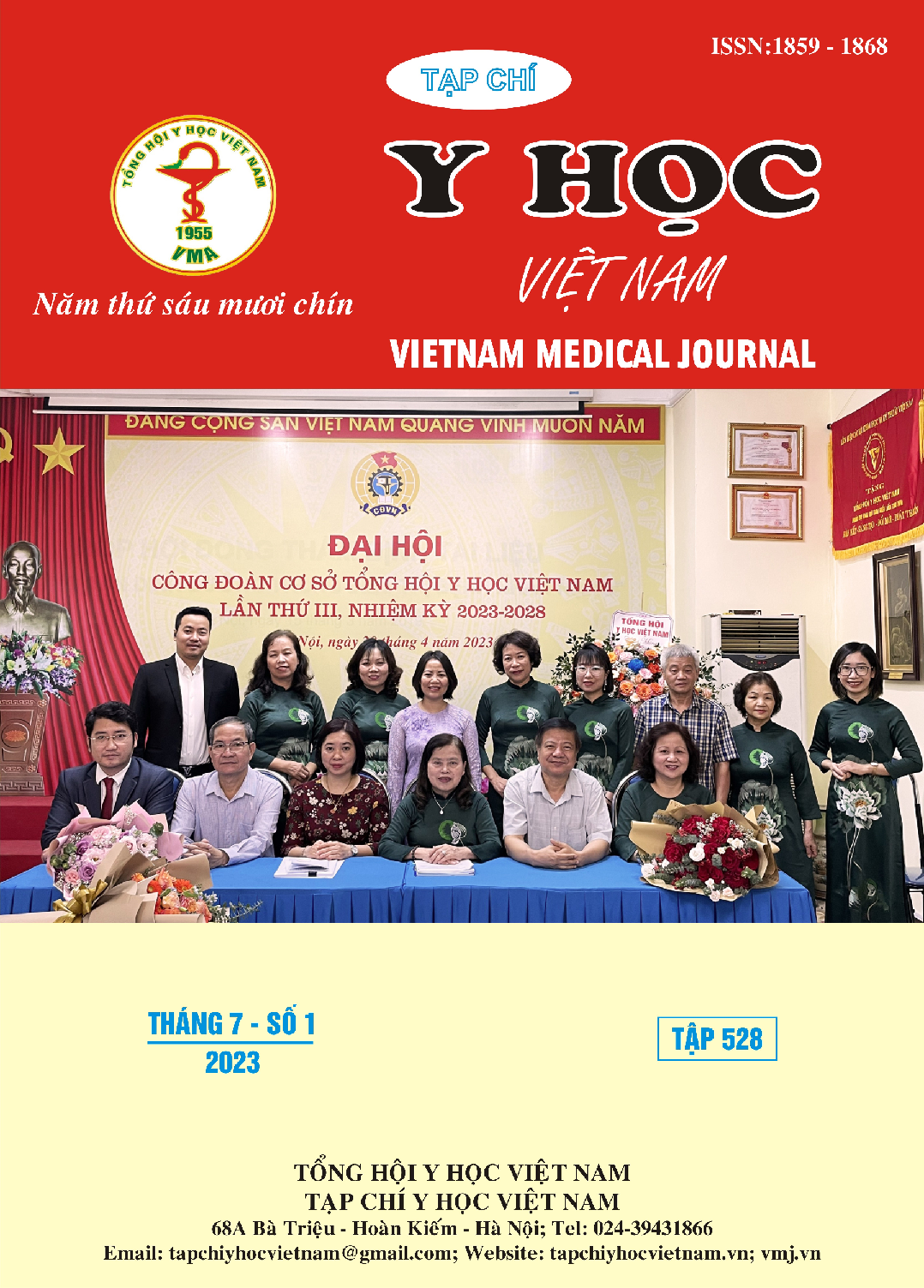EVALUATION OF SHOULDER REHABILITATION AFTER ROTATOR CUFF REPAIR
Main Article Content
Abstract
Objective: Evaluation the result of rehabilitation of shoulder joint after rotator cuff repair at the Xanh Pon hospital. Method: 30 patients after rotator cuff repair with “Mason-Allen modify” technique have been rehabilitated actively since first day after surgery. Review from first, third and sixth months after the rehabititation by UCLA (the University of California - Los Angeles Shoulder Score) evaluation scale. Results: The recovery rate was improved with statistically significant differences between the assessments. The final results after 6 months, according to UCLA, there are 86,6% patients felt their shoulder joints was functioning normally and almost normally. There are 13,3% with average results with normal range of shoulder joint motion, no signs of swelling or joint effusion when moving, only mild pain when exercising strongly; no patients with poor results; 100% of patients are satisfied with the treatment results. Conclusion: The rehabilitation method proposed and applied by the research team has brought good results for the patients.
Article Details
Keywords
Shoulder joint, rotator cuff, rehabilitation.
References
2. Roddy et al (2014), Subacromial impingement syndrome and pain: protocol for a randomised controlled trial of exercise and corticosteroid injection, BMC Musculoskeletal Disorders.
3. Osbahr D.C et al (2002), The effect of continuous cryotherapy on glenohumeral joint and subacromial space temperatures in the postoperative shoulder, Arthroscopy. 18(7), 748-54.
4. Olivier A et al (2012), Rehabilitation after arthroscopic rotator cuff repair: current concepts review and evidence-based guidelines, Int J Sports Phys Ther. 7(2), 197-218
5. Brody A et al (2016), Midterm clinical outcomes following arthroscopic transosseous rotator cuff repair. Int J Shoulder Surg, 10(1), 3-9.
6. D. Berglund MD et al (2017), Speed of recovery after arthroscopic rotator cuff repair. J Shoulder Elbow Surg, 26(7), 1271-1277.
7. Leesa M Galatz et al (2004), The outcome and repair integrity of completely arthroscopically repaired large and massive rotator cuff tears. J Bone Joint Surg Am, 86(2), 219-24.
8. Rokito AS et al (1996), Strength after surgical repair of the rotator cuff. Journal of shoulder & elbow surgery. 5(1), 12-7.


